Key Principles of Stunning Landscape Design Every Homeowner Should Know
A beautiful garden or outdoor space can completely transform your home. If you have a large backyard or a small courtyard, good landscape design can make your space more inviting, functional, and enjoyable. But what makes a landscape truly stunning?
It’s all about following some simple yet important design principles.
In this blog, we’ll walk you through the key principles of landscape design that every homeowner should know. Whether you’re planning a DIY project or working with professionals like Jake Baturynsky Gardens, understanding these basics will help you create a garden you’ll love.
1. Balance
Balance in landscape design means arranging your garden elements so the overall look feels stable, comfortable, and visually pleasing. It’s about making sure no part of the garden feels too heavy, crowded, or empty compared to the rest.
There are two main types of balance to consider:
- Symmetrical balance: This is when both sides of a garden space mirror each other almost exactly. Think of a neat, formal garden where plants, paths, and features are arranged in matching pairs on either side of a central point. This style gives your garden an orderly and elegant feel.
- Asymmetrical balance: This type is less formal and more natural. Different plants, textures, and shapes are placed unevenly but thoughtfully so that the overall composition still feels balanced. It creates a relaxed, inviting atmosphere that works well in casual or native-style gardens.
When your garden has good balance, it invites you in and feels peaceful to spend time in, whether you’re sitting on the patio or walking through the lawn.
2. Unity and Harmony
Unity in landscape design means that every part of your garden works together to create a feeling of wholeness. When your garden has unity, all the elements seem connected and belong naturally in the same space.
- Harmony is the sense that everything fits together nicely, creating a peaceful and inviting atmosphere.
- To create unity and harmony in your garden, try these tips:
- Use similar plants, colours, or textures throughout your space to create a consistent look.
- Choose furniture and hardscape materials like paving, fences, or garden edging that match or complement each other.
- Repeat shapes or patterns in different areas, such as circular stepping stones or rectangular garden beds, to tie everything together.
When your garden’s elements are united, it looks intentional, well-planned, and welcoming.
3. Proportion and Scale
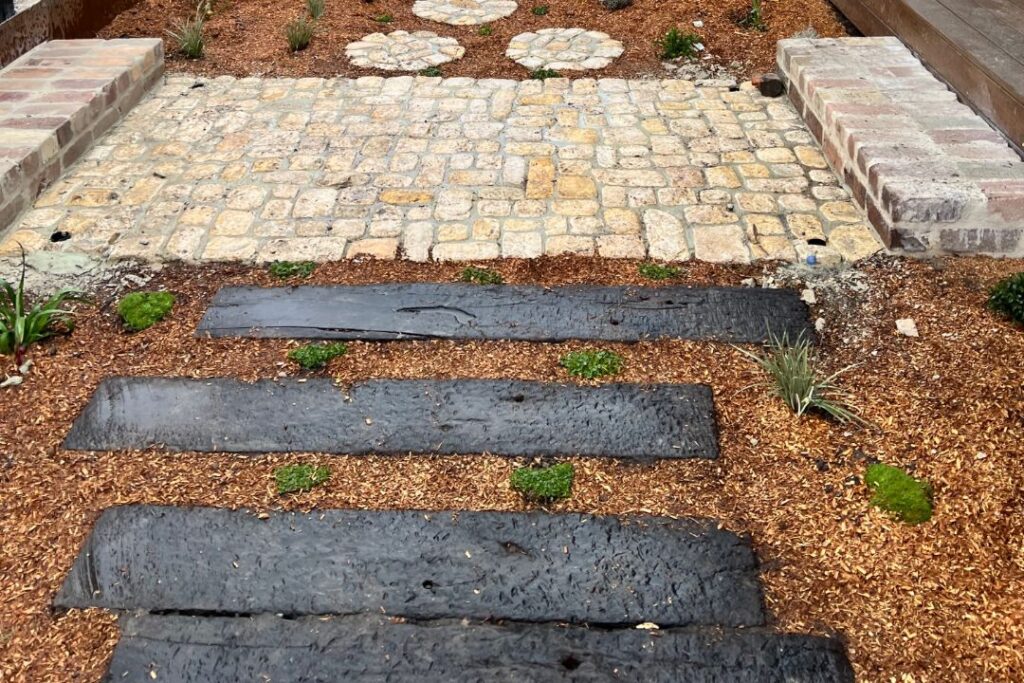
Proportion and scale are about how the sizes of your garden’s parts relate to each other and to your home.
- Proportion refers to the relationship between the sizes of different features in your garden. For example, a tall tree next to a small flower bed might look out of place if the sizes don’t work well together.
- Scale is about how these elements fit within the whole space and relate to your house and surroundings.
A huge water fountain might feel overwhelming in a small backyard, while tiny plants scattered across a large open area can look lost and unbalanced.
By choosing plants and features that suit the size of your outdoor space, you create a garden that feels balanced, comfortable, and visually pleasing.
4. Focal Points
A focal point is something that naturally draws your eye when you enter the garden. It can be a feature like a beautiful tree, a water fountain, a sculpture, or a colourful flower bed.
Having one or more focal points gives your garden interest and guides visitors through the space. Place focal points where they can be easily seen from key spots like your front door or patio.
5. Rhythm and Movement
Rhythm in landscape design is created by repeating certain elements like plants, colours, or shapes at regular intervals. This repetition helps guide the eye smoothly through the garden.
Movement refers to how your design leads people to explore your outdoor space, whether it’s along a path, around a corner, or towards a seating area.
Using curves, stepping stones, or changes in height can add movement and make your garden feel more dynamic.
6. Colour and Texture
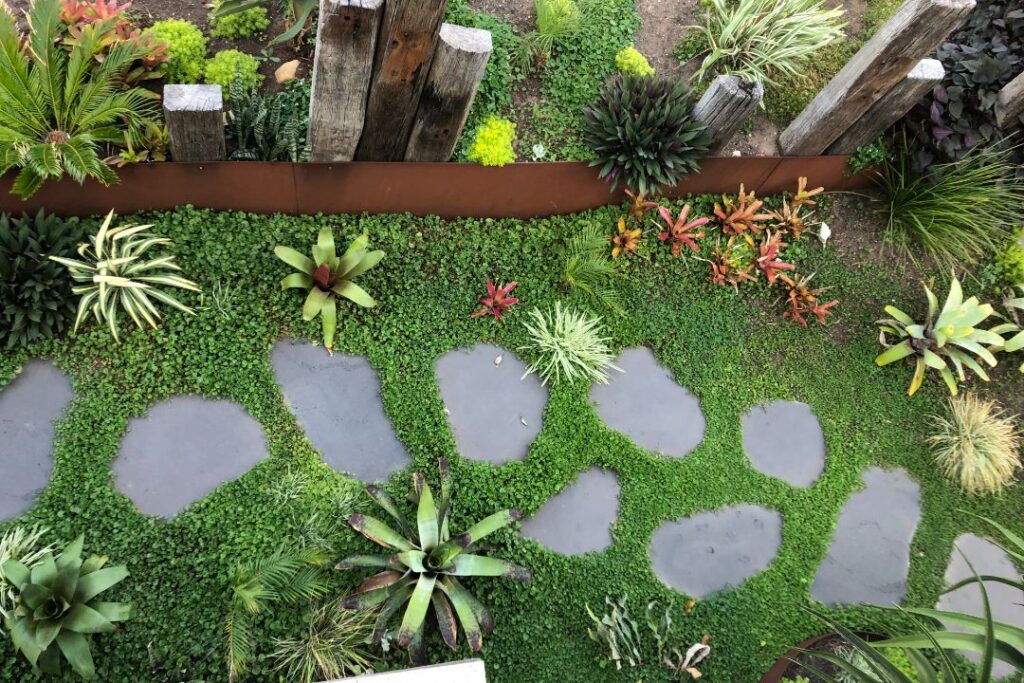
Colour adds mood and personality to your garden. Using a mix of colours that complement each other can make your garden lively and beautiful.
Texture is about the surface quality of plants and materials, from soft, feathery grasses to rough tree bark or smooth paving stones.
Combining different textures adds depth and interest, so your garden isn’t flat or boring.
7. Functionality
A stunning garden isn’t just about looks, it also needs to work for your lifestyle.
Think about how you want to use your outdoor space. Do you want a play area for kids, a quiet spot to read, space for entertaining guests, or a vegetable garden?
Good landscape design balances beauty with practical use to make your garden enjoyable every day.
8. Sustainability
Today, more and more homeowners are embracing sustainable landscape design as a way to care for the environment while still having a stunning garden. Sustainability means creating a garden that uses fewer resources and supports local ecosystems.
- Choosing native plants: Native plants are perfectly suited to your local climate and soil. They require less water, fewer fertilizers, and are naturally resistant to local pests and diseases. Plus, they provide habitat for native birds, bees, and butterflies, boosting biodiversity.
- Drought-tolerant plants: With water restrictions common in many parts of Australia, drought-tolerant plants are a smart choice. These plants survive long dry spells with minimal watering, helping you save on your water bills. Succulents, kangaroo paws, and lavender are popular examples.
- Water-saving irrigation: Installing drip irrigation or smart watering systems ensures your plants get just the right amount of water without waste. These systems deliver water directly to the roots and can be programmed to water early in the morning or late at night when evaporation is lowest.
- Mulching: Applying mulch around your plants helps retain soil moisture, suppress weeds, and reduce the need for frequent watering. Organic mulches like bark or straw also improve soil health as they break down.
- Composting and waste reduction: Use kitchen scraps and garden clippings to create compost, reducing waste and providing rich, natural fertiliser for your garden. Avoid chemical pesticides and herbicides that harm beneficial insects and pollute waterways.
Sustainable gardens not only look natural and beautiful but also reduce your environmental footprint and require less maintenance, saving you time and money in the long run.
9. Seasonal Interest
A garden that looks great all year round is truly a joy to own. By planning for seasonal interest, you ensure your outdoor space has visual appeal and variety in every season, keeping your garden lively and fresh.
- Spring: This is the time for bright, fresh blooms and new growth. Include flowering bulbs like tulips and daffodils or colourful annuals for a vibrant spring display.
- Summer: Choose hardy, sun-loving plants that bloom through the hot months. Think about adding flowering shrubs like hibiscus or fragrant plants like gardenias. Summer is also great for edible gardens like tomatoes and herbs.
- Autumn: Add plants with rich autumn colours—think maples, grasses with golden plumes, or flowering plants like chrysanthemums. Autumn berries or seed heads add texture and interest too.
- Winter: Even in winter, your garden can shine. Evergreens such as conifers or eucalyptus keep greenery alive. Plants with interesting bark, like paperbark trees, or those with bright berries, like holly, add colour and structure.
- Layering plants: Combine plants with different bloom times, heights, and textures so that as one fades, another comes into its prime. This layering effect creates depth and complexity.
Planning for seasonal interest means your garden isn’t just a summer showpiece—it’s a beautiful, engaging space every day of the year.
10. Lighting
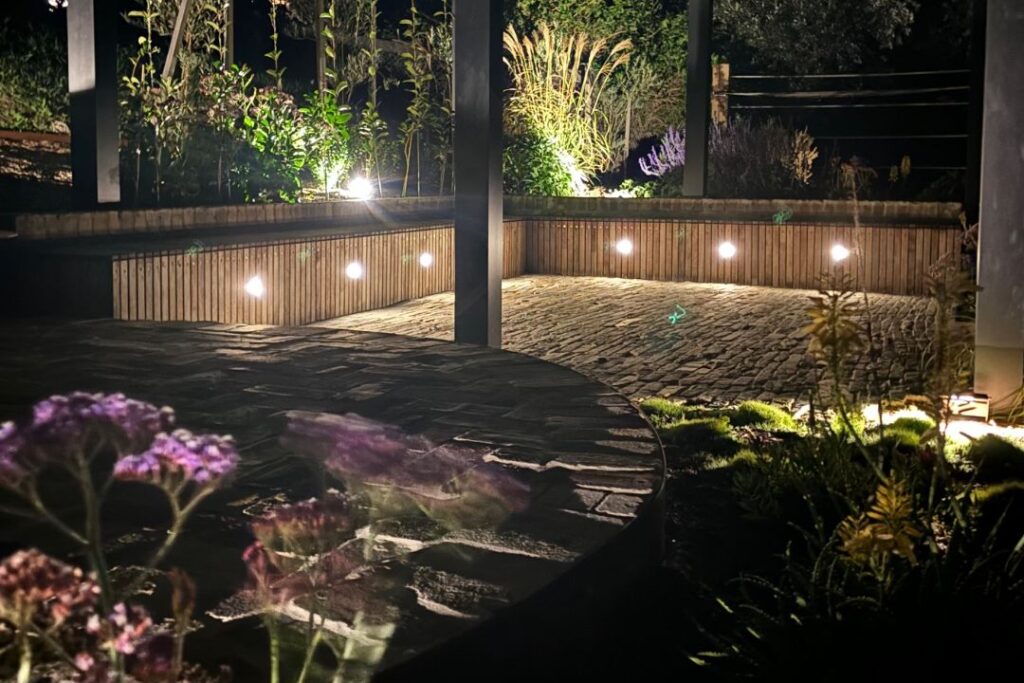
Outdoor lighting is often overlooked but plays a vital role in enhancing the beauty and functionality of your landscape. Thoughtfully designed lighting can transform your garden after dark, making it safe, inviting, and magical.
- Highlight focal points: Use spotlights or uplights to draw attention to special features like a beautiful tree, sculpture, or water feature. This creates drama and focus in your garden design.
- Path lighting: Low-level path lights make walking safe and easy while adding a welcoming glow to entrances and garden paths. Solar-powered options are energy-efficient and easy to install.
- Ambient lighting: Soft lighting like lanterns or fairy lights adds warmth and atmosphere, perfect for outdoor entertaining or relaxing evenings.
- Security: Well-lit gardens deter intruders and make your home safer. Motion-sensor lights can illuminate dark corners when needed without wasting energy.
- Smart controls: Modern lighting systems can be controlled via apps, allowing you to schedule lights, adjust brightness, or create scenes for different occasions.
Good landscape lighting extends the usability of your outdoor space, highlights your garden’s best features, and adds value to your home.
Why These Principles Matter
Following these key principles helps you avoid common mistakes like overcrowding, mismatched styles, or poor functionality. They give your garden structure and personality, making it a place you want to spend time in.
Working with professionals like Jake Baturynsky Gardens ensures these principles are applied expertly, saving you time and giving you a garden that’s both stunning and long-lasting.
Ready to Create Your Dream Garden?
If you’re thinking about improving your outdoor space, keep these key principles of landscape design in mind. And when you’re ready for expert help, Jake Baturynsky Gardens is here for you.
We bring creativity, skill, and passion to every project, helping you transform your garden into a beautiful, balanced, and functional space.
Call us today to book your consultation. Let’s bring your dream garden to life!
Recent Post
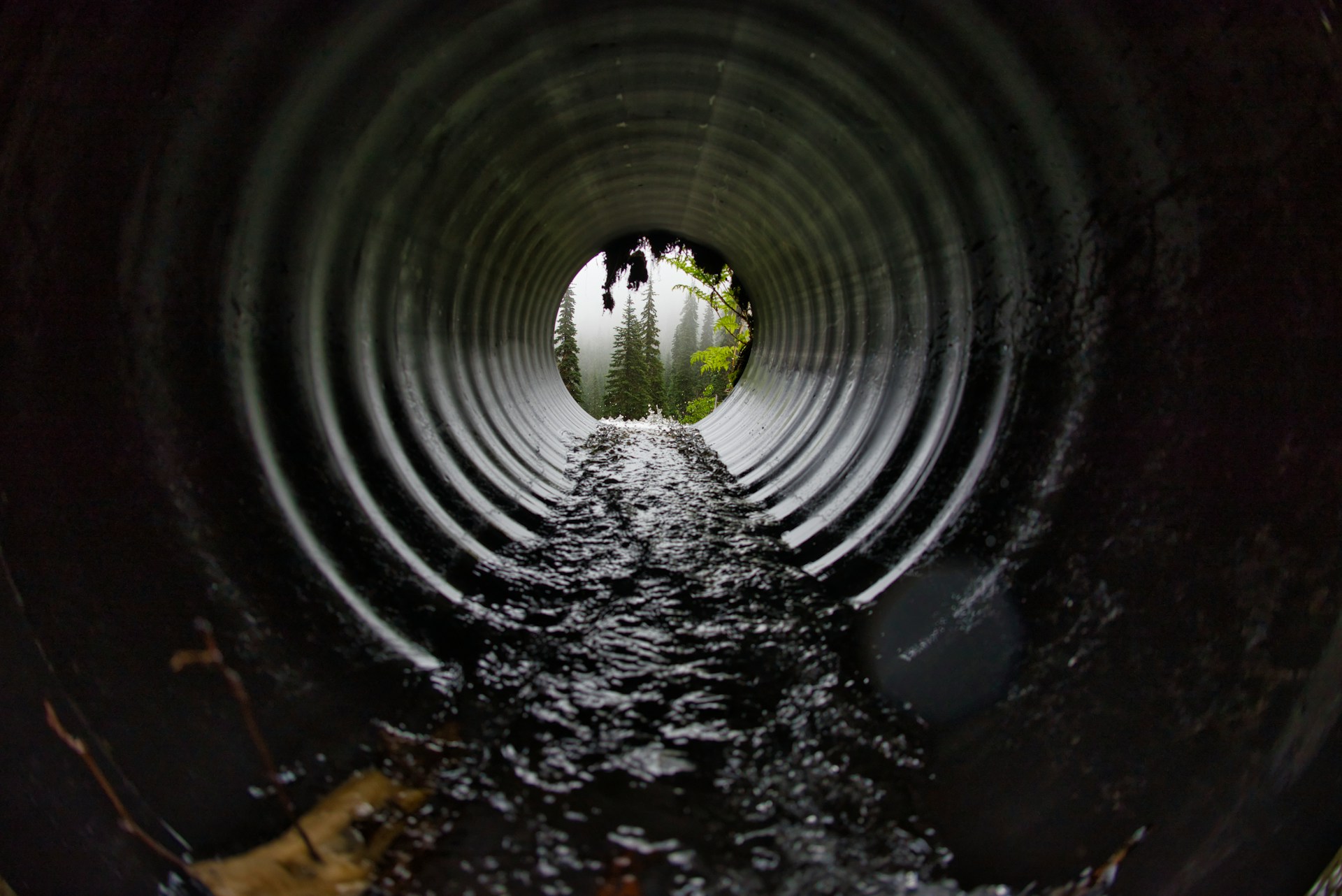
The Impact of Drainage and Grading in Landscape Construction
When it comes to creating a beautiful and lasting garden or outdoor space, two things often fly...
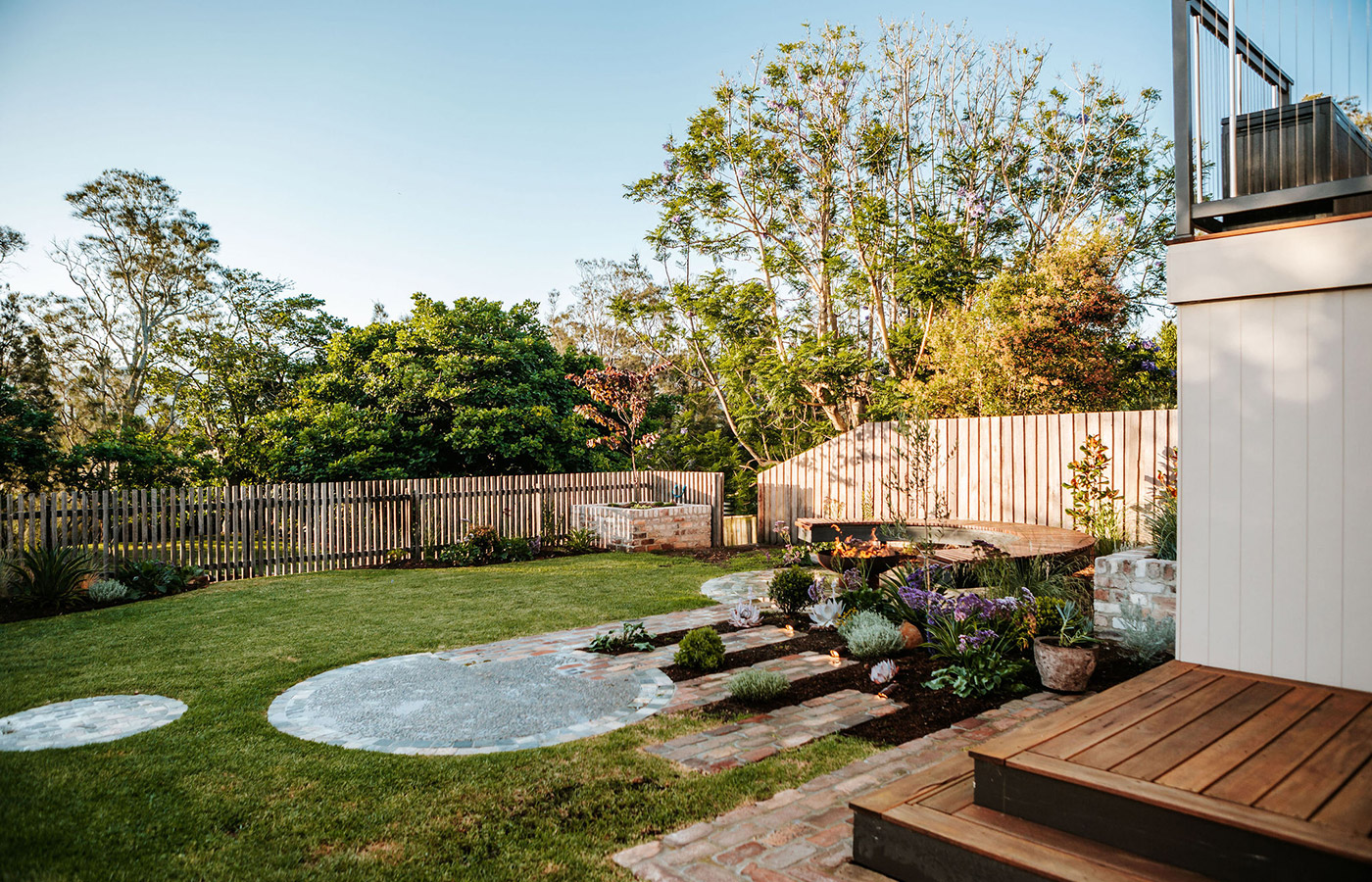
Native Gardens: A Beautiful and Low-Maintenance Choice
When it comes to creating a stunning outdoor space that’s easy to care for and perfectly suited to...
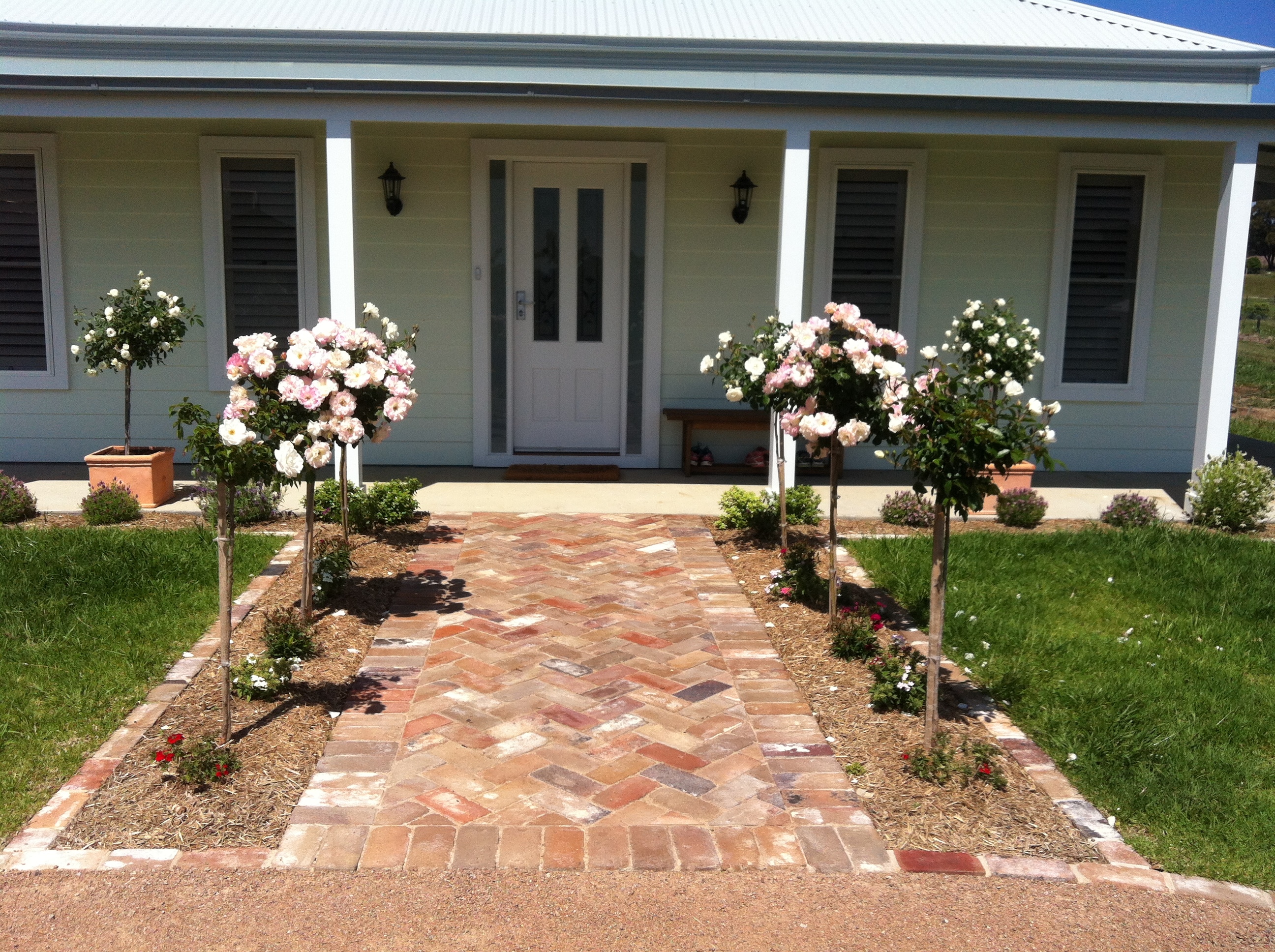
How a Front Yard Makeover Can Change the Look of Your Home
Your front yard is the first thing people see when they approach your home. It’s your property’s...